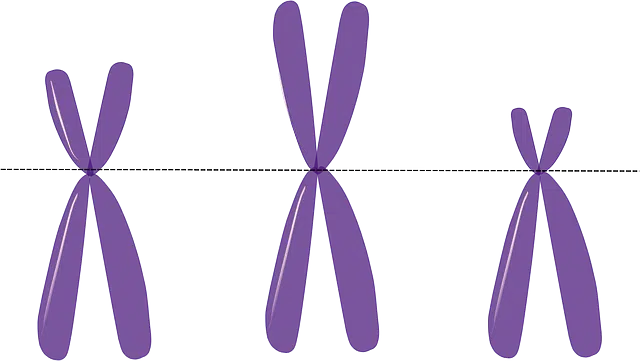
Diploid cells have a double set of chromosomes.
Diploid is a cell , an organism or a tissue that has two sets of chromosomes . Chromosomes , for their part, are rod-like corpuscles in which the chromatin belonging to the cell nucleus is distributed in the process of meiosis and mitosis .
To understand the concept of diploid, therefore, other notions must be defined. Mitosis and meiosis are cell division processes; Chromatin, in turn, is the group of proteins, histones and DNA found in the nucleus of eukaryotic cells and that make up the eukaryotic chromosome .
diploid cells
Let's see what diploid cells are. These are those cells that have a double series of chromosomes since they have two sets of these. This particularity allows diploid cells to be distinguished from gametes, which are cells formed by a single set of chromosomes (they only have one version of the genetic data). The gamete, at fertilization, fuses with a gamete belonging to the opposite gender to give shape to the zygote.
Human diploid cells have 46 chromosomes (double series of 23). The gametes, which originate through meiosis of the germ cells, have half of them (that is, 23).
While a diploid cell is composed of an even number of chromosomes, a haploid cell contains a single set of chromosomes or half the number established as normal in diploid cells. The reproductive cells, both eggs and sperm, in the case of mammals, are haploid, while the rest of the organisms' cells contain a pair, one half contributed by the mother and the other by the father.
Chromosomal mutations
Chromosomal mutations , also known as chromosomal aberrations , are variations in the number or structure of a chromosome.
These errors occur during the structuring of gametes through meiosis (a process known as gametogenesis) or in the divisions that first develop in the zygote. The alterations can be caused by the break of the DNA chain, for example.

Diploid eggs can be involved in the reproduction of bees.
Diploid eggs in bee reproduction
It is worth mentioning that in different species the fertilization process usually differs. In the case of bees , for example, there are various forms of fertilization , which results in individuals that are clearly distinguishable from each other: workers, drones and queens .
If a diploid egg is produced by meiosis , that is, through asexual reproduction (because the egg is fertilized without the need for the sperm to intervene) the bee can produce female gametes. If, on the other hand, fertilization is carried out by a male and he produces sperm through mitosis, these will be fertilized by the queen's haploid eggs and the result will be a worker bee.
The Queen will lay three kinds of eggs , one of them diploid and the other two haploid. That is to say that the first, those that have been fertilized, will be future queens, while the second, the eggs that have not been fertilized, will be workers, the female ones , and drones, the male ones. Each one will have an indisputable task in the life of the hive, the former will work and feed the larvae while the latter will be future candidates to mate with the queen.
If of all the eggs that the queen lays none of the fertilized ones are born, the survival of the hive will be threatened , because the workers cannot reproduce, they are infertile since their reproductive organs have been atrophied through the pheromonal control of the acid. oxo-decenoic acid produced in the Queen's mandibular glands. It is worth saying that in the event that it dies, after a few weeks, the pheromone will be released and the workers will be able to begin to develop their ovaries and possibly even lay eggs, however they will not be able to be fertilized by the males , therefore that the individuals born from them will all be males.
It is worth mentioning that the fertilization of bees is asexual since the queen during the reproductive act receives the sperm from the male and stores it in a chamber called the spermatheca, but fertilization will take place later , when laying the eggs.
